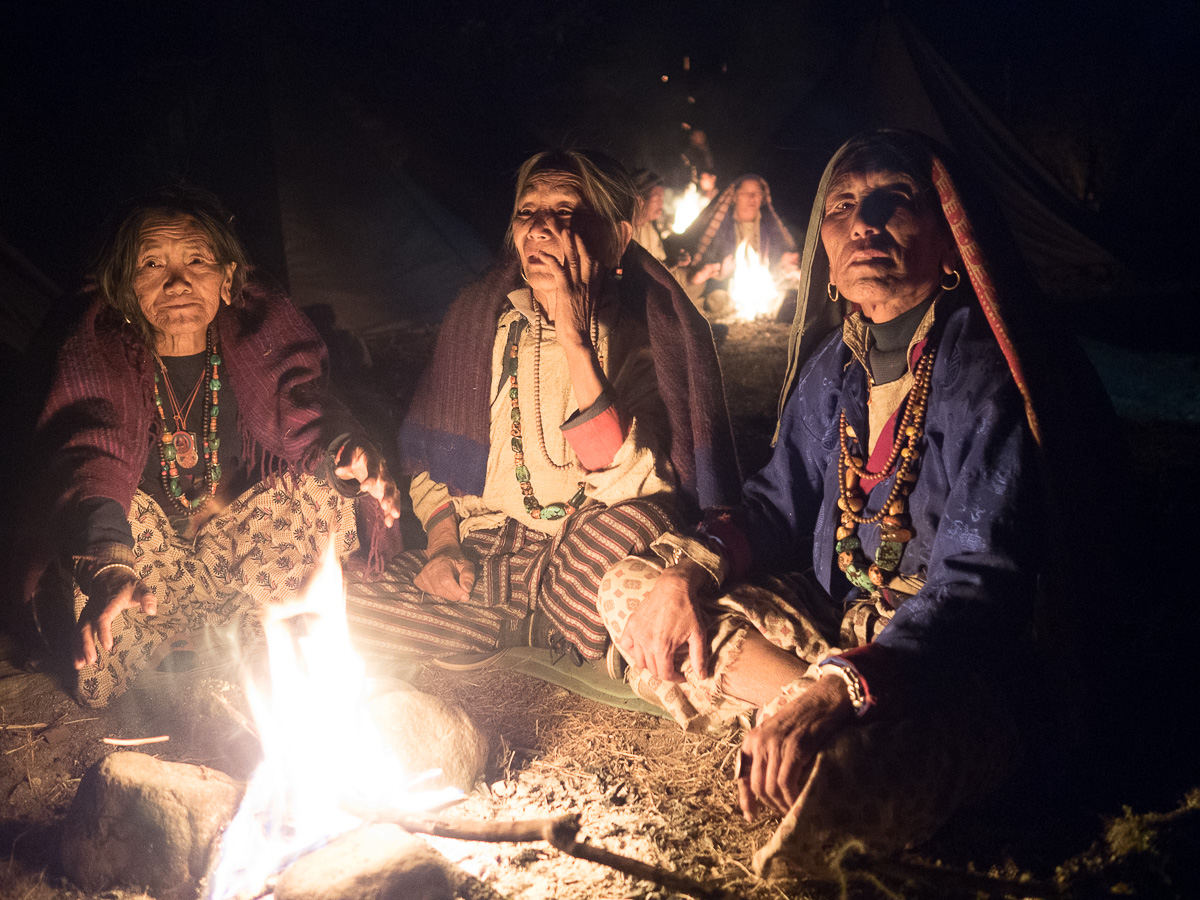Read the first part of the story
The crossing between Dolpa[1] and Mugu districts is more than just a jump over an administrative border. We have been walking for eight days, oscillating between 3000 and 5600m in untouched wilderness, watched over by glaciers, climbing treacherous slopes and crossing wild rivers. After some time, the strength of the raw Himalayan nature can feel overwhelming.







I must admit I somehow feel happy to finally reach the village of Mugu[2], a few kilometres away from Tibet. People here don’t look like the Dolpopa, don’t speak the same dialect and even – this is a personal opinion only based on a few days experience, so take it for what it is – don’t behave the same. In Dolpo I felt like a baby surrounded by the blankets of kindness of the Dolpopa. Here, they seem to me harsher and more straightforward.


We are lucky to arrive in Mugu at a propitious time. Indeed, the much revered Pema Ringzal Rinpoche will stay by the village for a couple of day’s teaching. Buddhist people in the Himalayas take the arrival of a Precious Master very seriously. When such an event occurs one can expect to see people from the neighbouring valleys, sometimes as far as a few days walk, coming to the teachings. On a photographic point of view, all these mountain people staying in teepee-like tents by the fire for days is a godsend! – on a health-related point of view though, it’s a catastrophe: everyone asks me for medicine to fix digestive problems.



In moments like these, knowing a little bit of the local language comes in handy. I’ll take the time to talk about dubious but funny subjects with an assembly of monks, literally surrounding me, curious of this white-face that knows bad words in Nepali. But the best came as night was falling on the smoking teepee camp. There I could meet families from the whole region, sitting by the fire, preparing their dinner. People are now more relaxed, meaning much more accessible. Seeing their photos under the flattering light of a glowing fire makes them ask for more. It’s never been so easy to photograph people in the Himalayas!



As night settles, I start to think about going back to my camp, an hour away from here. I visit one last family by the fire and the men start to intimidate me. “You know, it’s dangerous to walk here at night. Someone may be waiting for you and kill you for your money” says one of them, looking straight into my eyes. I still don’t know if they were trying to frighten me but… it worked. This hour walk has been daunting. Imagine yourself in complete darkness, on a mountain path, imprisoned in a tight valley in the middle of nowhere, with the sound of growling dogs, the glowing eyes of animals coming out of the bushes, and the oppressing sound of the raging river underneath… I guess you get it!



The trek is almost over. We pass through the last Buddhist villages. Haystacks that will feed the livestock for the long winter to come cover the roofs of the stone houses. The children, still intimidated by the white guys coming from nowhere shyly glance at us, coming closer, and closer, and closer… until the big white monster I enjoy to incarnate scares them away in a tempest of laughs, and some desperate cries for the youngest. Think about it, this may well be their first close encounter with a ghostly-white man, and one of such a kind… how scary can it be!




As we get down, Hindu villages become prevalent. Now we are at a lower altitude and closer to civilization, vegetables are easier to find. Beer also. In a way, after a month into the mountains, it’s a relief. However, as I think of what we went through I already feel nostalgic. Not only this trek through the wonderful Dolpo and Mugu is over, but this whole adventure is. Luckily, the three awful days of Jeep and bus to reach the comforting Fewa lake, in Pokhara, will be a nice transition towards my coming back home.








